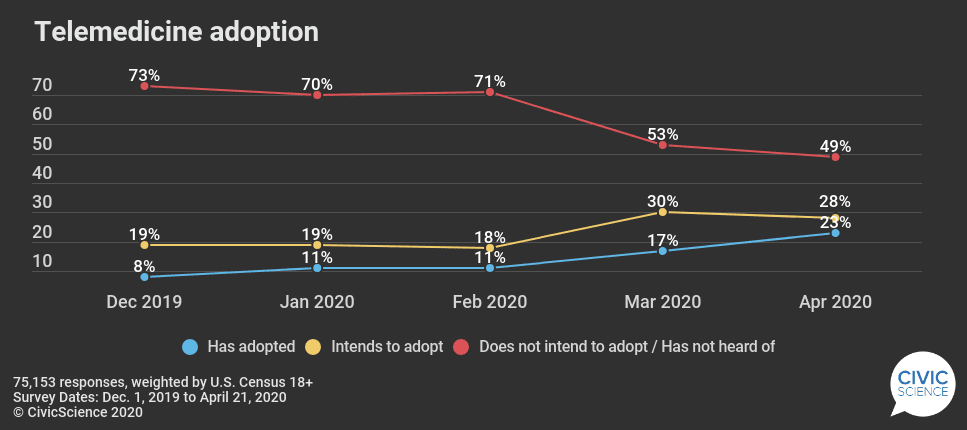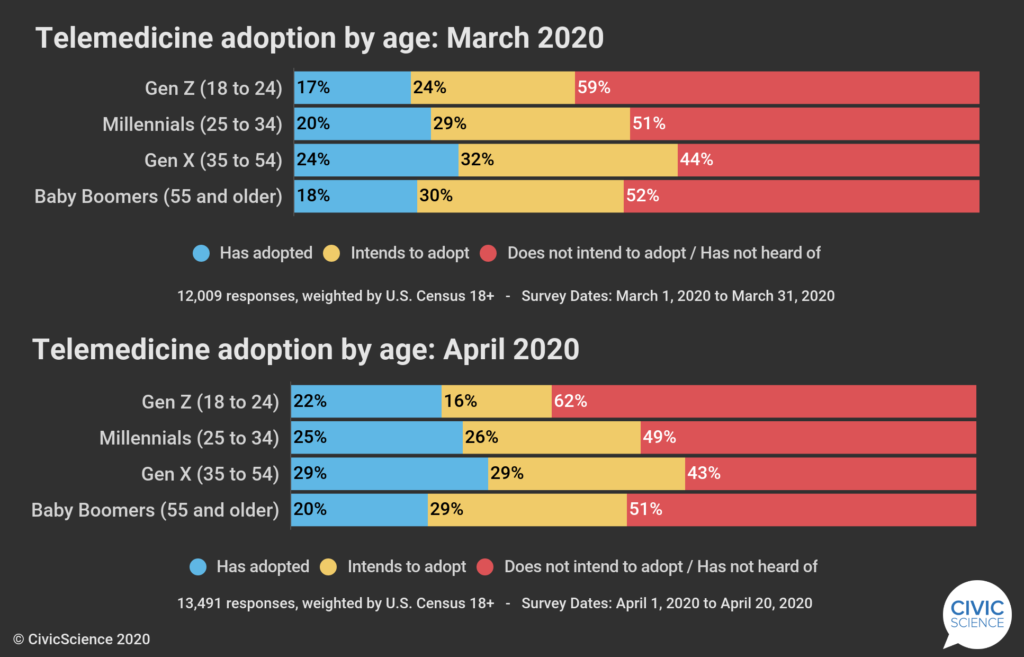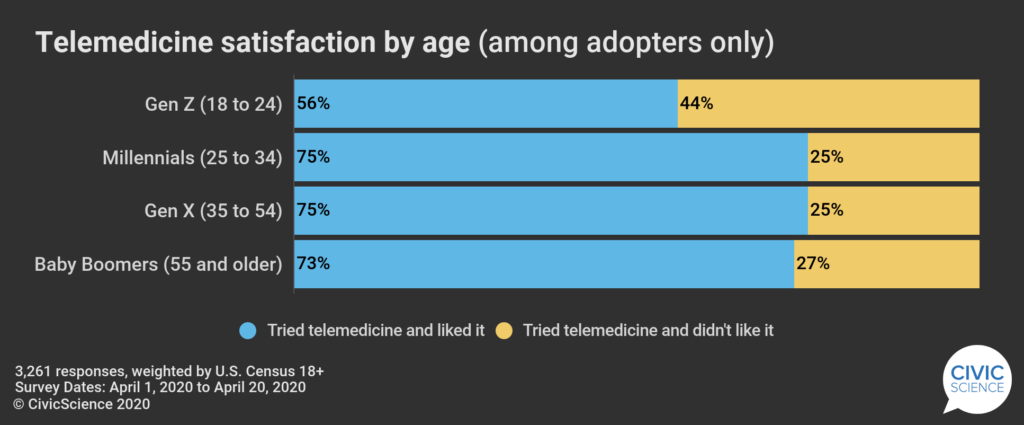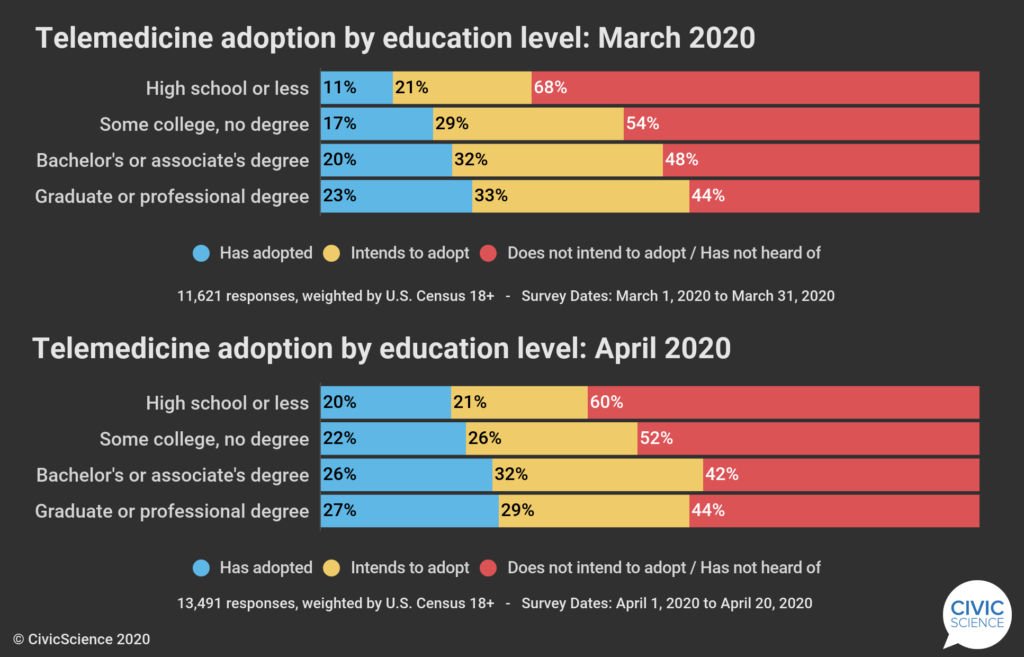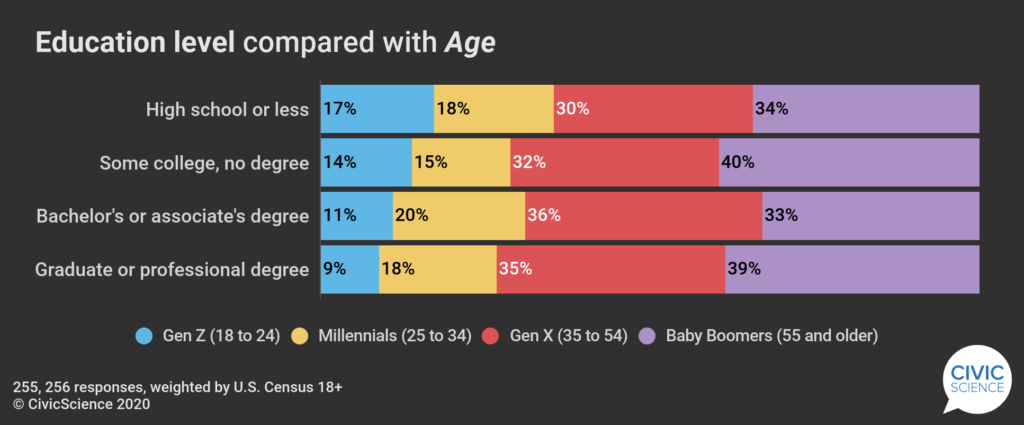Editor’s Note: This article was one in an ongoing series of CivicScience studies on telemedicine during the COVID-19 pandemic. For the latest research into telemedicine use, click here.
Nearly one-quarter of U.S. adults have now used telemedicine, a high water mark in CivicScience’s ongoing tracking of remote healthcare services.
For the first time since tracking began, fewer than one-half of U.S. adults (49%) say they are either unaware of telemedicine or don’t intend to try it. Adoption rates rose from 17% in March to 23% in April — a 35% monthly increase. Meanwhile, intent to try it ticked down, presumably as more intenders became adopters.
While increases to telemedicine adoption were primarily driven by adults older than 35 in CivicScience’s last monthly report, the figures for April show a broad-based swell in adoption of 20% or more among all adults under age 55. Baby Boomers saw a more modest uptick, from 18% to 20% adoption over the past month.
Gen Z, which saw the greatest monthly rise in telemedicine adoption (a 29% boost), also saw the greatest decline in intent to use it (a 33% drop). However, every generational bucket saw at least a small decline in intent. Again, this could be due to intenders becoming adopters.
Interestingly, Gen Z is an outlier when it comes to approval of telemedicine after trying it.
Another interesting find? Those whose self-reported education level is at the high school level or less nearly doubled their telemedicine adoption rate from March to April. This group went from 11% adoption to 20% adoption in one month, an 82% increase.
While one might be tempted to assume that the surge of adoption among those in the ‘high school or less’ education category is primarily due to the similar boom among younger American adults (ages 18 to 24), the group actually includes far more respondents over the age of 35 (64%).
It’s clear that as the coronavirus crisis drags on, American adults who previously had been resistant to telemedicine have been pushed into adopting the practice. This includes young adults, who still report lower levels of satisfaction with telemedicine after trying it.
